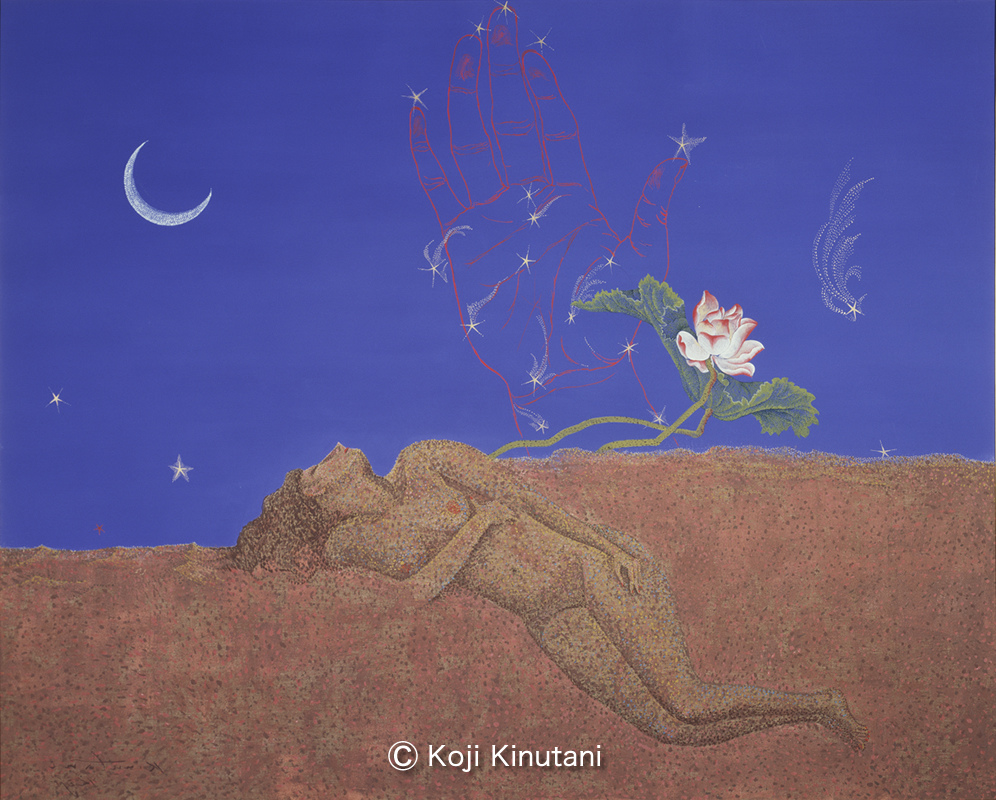WORKS

連華夢譚
寸法: 194×259cm
年代: 1983
素材・技法:ミクスト・メディア
Dream Tale of a Lotus Flower
Size: 194×259cm
Date: 1983
Mediums:Mixed media
Commentary
A woman lies on the sand with dreamily expression. Expressing eternal time within this peaceful space, lotus flowers and the hands of Buddha, expressing salvation, float in the heavens. While this painting is Kinutani’s memoir of his trip to Dunhuang, it is also a work that marked the beginning of a new chapter of the artist’s painting style.
The feature of Kinutani’s works from the early 1970’s is the free and bold contour line. However, at the start of the 1980’s, these lines were eliminated, and Kinutani embraced pointillism instead. His technique of applying sand on the canvas to conceal the lines (as seen in this work) was revolutionary. Kinutani’s stylistic evolution may have been an irresistible impulse like a revelation from god.
莲华梦谭
尺寸: 194×259cm
制作年: 1983
素材:复合媒材
作品解说
梦幻般地躺在沙子上的女性。天空中画着莲花和象征救赎的佛手,静谧的空间暗示着悠久时光的流逝。据说,这幅画描绘了敦煌的记忆,成为绢谷艺术新发展的起点。
1970年代初期绢谷风格的特征,是一条条在画面上自由奔驰的“轮廓线”,而到了1980年代,则开始实践消除这种线。诸如这幅画所使用的点描手法,以真实的沙子掩盖“轮廓线”,属于革新手法。改变自身的绘画风格,开始新一轮的挑战,或许就是在佛手指引下的一种必然欲求。
解説
夢見るかのように砂上に横たわる女性。天空には、蓮の花とともに救済を象徴する仏の手が描かれ、静謐な空間に悠久の時の流れを暗示させる。敦煌の記憶を描いたというが、本作は絹谷藝術新展開の起点となったものである。
1970年代初期の絹谷スタイルの特徴は、画面上を自由奔放に走る「輪郭線」にあった。それが80年代に入り線を消去する新展開を実践。本作のような点描画法であり、実際の砂で線を埋没させる革新的なものであった。自らの画風を一変させる新たなる挑戦は、まさに仏の手に導かれるような必然の欲求であったのかもしれない。